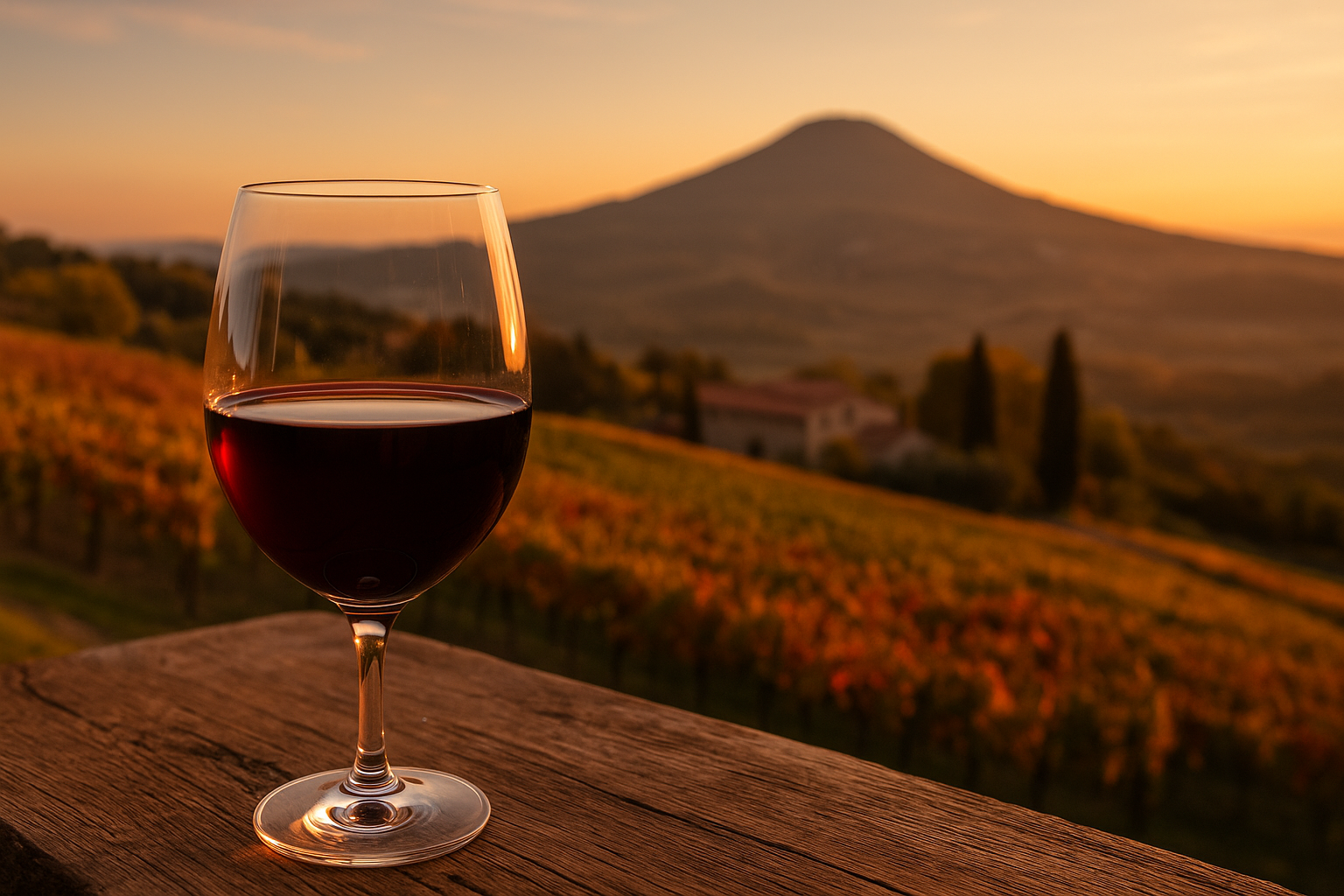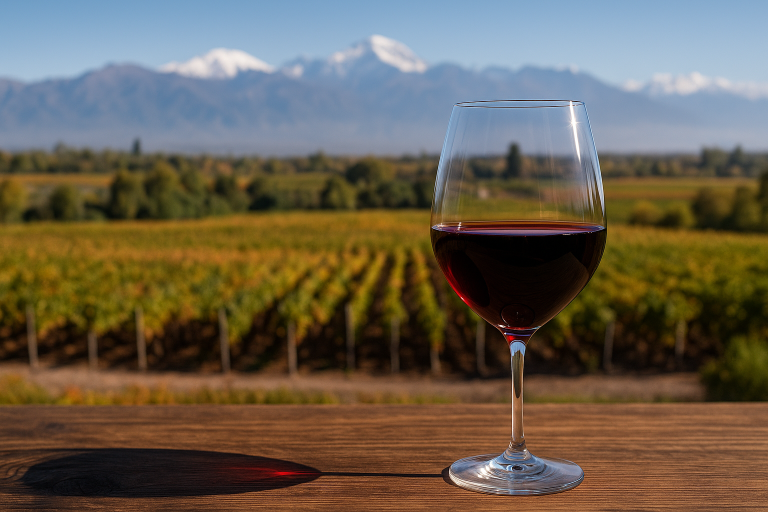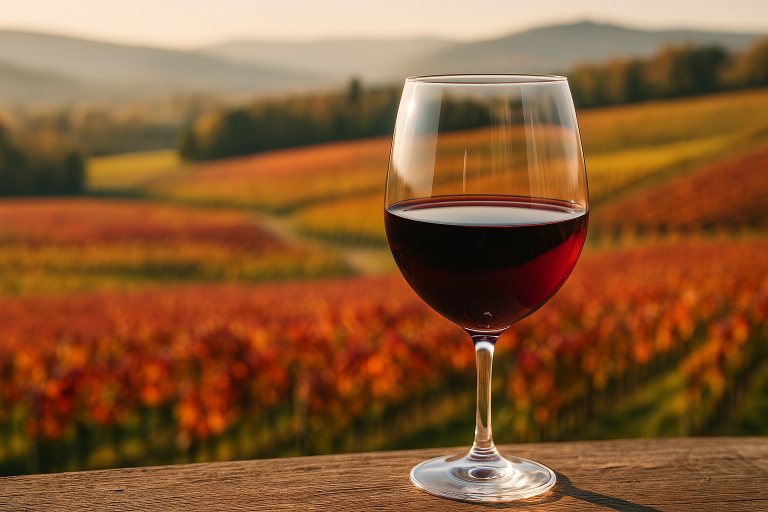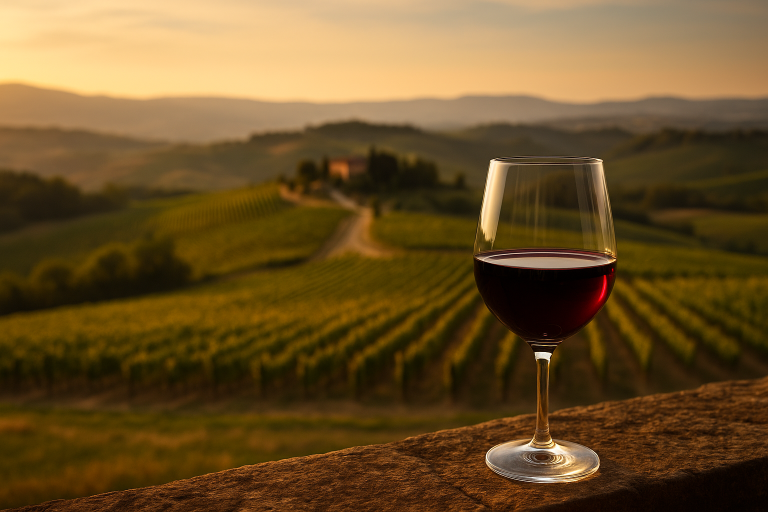Bold, structured, and deeply expressive, Aglianico is often called the “Barolo of the South” — a testament to its elegance, longevity, and complexity. Hailing from the sun-drenched volcanic soils of southern Italy, this ancient red wine is one of the country’s true treasures. With its rich tannins, dark fruit, and earthy undertones, Aglianico captures the soul of the Mediterranean in every glass.
A Brief History
The history of Aglianico stretches back more than 2,500 years, making it one of the oldest grape varieties still in cultivation. Its origins trace to ancient Greece, where it was likely brought to southern Italy by settlers around the 6th century B.C. The name “Aglianico” is thought to be derived from Hellenico, meaning “Greek,” a nod to its classical ancestry.
The grape flourished in Campania and Basilicata, regions once part of the ancient kingdom of Magna Graecia. It became the foundation for wines that were celebrated in Roman times, including the legendary Falernian, considered the finest wine of the empire.
Despite its noble heritage, Aglianico remained a regional specialty for centuries, overshadowed by the more famous wines of northern Italy. In the late 20th century, however, it began to receive the recognition it deserved. Modern winemaking techniques and renewed attention from passionate vintners have transformed Aglianico into one of Italy’s most acclaimed red varietals — rich, complex, and capable of extraordinary aging.
Where It’s Grown
Aglianico thrives in the sunny, volcanic hills of southern Italy, particularly in:
- Campania: Home to the famous Taurasi DOCG, where the grape produces powerful, age-worthy wines with deep color, structure, and finesse. The volcanic soils of Mount Vesuvius lend minerality and spice.
- Basilicata: The Aglianico del Vulture DOCG, grown on the slopes of the extinct Mount Vulture volcano, produces equally majestic wines — slightly more rustic, with earthy complexity and firm tannins.
- Molise and Puglia: Smaller plantings yield lighter, fruitier versions, often enjoyed young.
Outside Italy, small experiments with Aglianico are emerging in Australia, California, and Texas, where warm climates mirror its native southern Italian conditions.
Tasting Notes
Aglianico is typically full-bodied with high tannins and vibrant acidity, making it both powerful and age-worthy. Its aromas are distinctive — black cherry, plum, and blackberry mingle with leather, tobacco, and smoky spice. On the palate, expect rich, dark fruit layered with notes of earth, cocoa, dried herbs, and iron, finishing long and firm.
With age, Aglianico develops exceptional depth, revealing nuances of truffle, balsamic, and dried rose. Young wines can be intense and structured, often benefiting from decanting or cellaring, while mature bottles offer incredible balance and complexity.
It pairs beautifully with braised meats, lamb, osso buco, aged cheeses, and tomato-based pastas — dishes that can stand up to its strength and savoriness.
The Essence of Aglianico
Aglianico is a wine of contrasts — ancient yet modern, powerful yet graceful. It embodies the rugged beauty of southern Italy, shaped by volcanoes, sun, and centuries of winemaking tradition.
For those who love wines with structure, history, and soul, Aglianico is a discovery worth savoring — a noble red that speaks of the land, the people, and the passion that created it.







